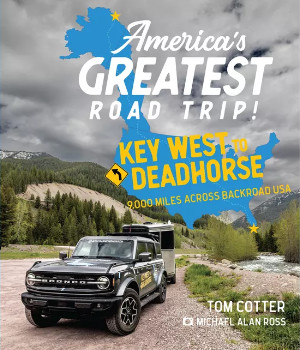 It’s a simple concept. Position yourself at the southernmost point in the continental United States then drive to the northernmost point in the U.S. accessible by road. The former is Key West, Florida. Deadhorse, Alaska, is the latter. The two are separated by a little over 4,000 miles as an extremely hardy all-weather crow might fly. Limited to traveling on the earth’s surface, Tom Cotter and Michael Alan Ross clocked 8,881 miles in making the connection. The difference is easily justified. Tom and Michael had more fun than any crow could even dream of.
It’s a simple concept. Position yourself at the southernmost point in the continental United States then drive to the northernmost point in the U.S. accessible by road. The former is Key West, Florida. Deadhorse, Alaska, is the latter. The two are separated by a little over 4,000 miles as an extremely hardy all-weather crow might fly. Limited to traveling on the earth’s surface, Tom Cotter and Michael Alan Ross clocked 8,881 miles in making the connection. The difference is easily justified. Tom and Michael had more fun than any crow could even dream of.
Tom Cotter is best known as The Barn Find Hunter from the numerous books and videos he has produced about automotive treasures found in barns and the like. He is also a road-tripper whose adventures include a cross-country Model T drive documented in a book I reviewed here. Michael Alan Ross is a very successful automotive photographer whose work filled that Model T book. On that Model T drive, MAR, as he is commonly known, drove a chase vehicle. This time he and Cotter share the driving and space in the small camper they tow.
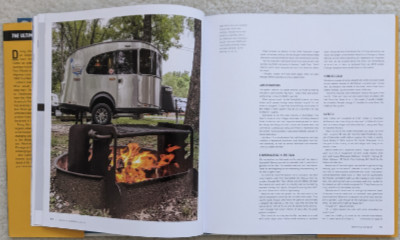 That camper was a new Basecamp 16X on loan from Airstream. The tow vehicle was a 2021 Bronco Outer Banks on loan from Ford. As Cotter tells it, he got the Bronco by telling Ford that Airstream had promised him a camper and he got the camper by telling Airstream that Ford had promised a Bronco.
That camper was a new Basecamp 16X on loan from Airstream. The tow vehicle was a 2021 Bronco Outer Banks on loan from Ford. As Cotter tells it, he got the Bronco by telling Ford that Airstream had promised him a camper and he got the camper by telling Airstream that Ford had promised a Bronco.
Very early in the trip, the travelers broke one of the few guidelines they had established by jumping on I-75 while still in southern Florida. This is at odds with the “backroad USA” called out in the subtitle and Cotter readily admits that it is “cheating”. But it is understandable. With everything that lay ahead of them, there was a natural urge to leave the familiar behind and get on with the exotic. Before leaving Florida, they returned to the planned program by leaving the interstate for US 27.
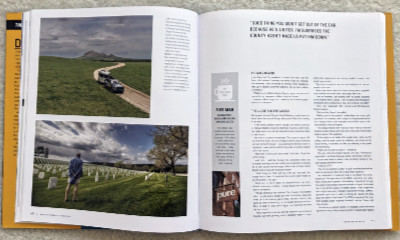 They clipped a corner of Georgia, then crossed Alabama (with a stop in Muscle Shoals) before turning north in Louisiana to reach Tennessee. They entered Missouri via the bootheel and maintained a west-by-northwest course through that state and Kansas with appropriate adjustments to take in the big ball of twine in Cawker City. Then it was a little more directly north through Nebraska and the Dakotas with a Memorial Day pause at the Black Hills National Cemetery in South Dakota. There was a different sort of pause at the North Dakota line. Despite all of Cotter’s past travels, he had, at this point, visited just forty-nine states. North Dakota was number fifty.
They clipped a corner of Georgia, then crossed Alabama (with a stop in Muscle Shoals) before turning north in Louisiana to reach Tennessee. They entered Missouri via the bootheel and maintained a west-by-northwest course through that state and Kansas with appropriate adjustments to take in the big ball of twine in Cawker City. Then it was a little more directly north through Nebraska and the Dakotas with a Memorial Day pause at the Black Hills National Cemetery in South Dakota. There was a different sort of pause at the North Dakota line. Despite all of Cotter’s past travels, he had, at this point, visited just forty-nine states. North Dakota was number fifty.
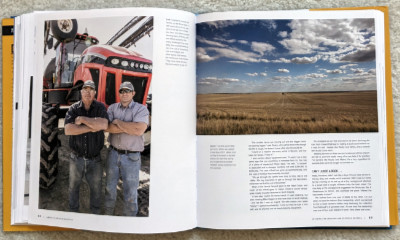 North of Bismarck, Cotter and MAR picked up US 2 and headed west. That might not be the most direct route to Alaska but there were friends near Seattle and, as any good road-tripper knows, anything can be “on the way” if you look at it just right. Hitting Glacier National Park and the Going-to-the-Sun Road might have also been a factor in route selection but the scenic road was not yet open for the summer when they arrived. There was, of course, plenty of great scenery even without Going-to-the-Sun, and plenty of interesting people, too.
North of Bismarck, Cotter and MAR picked up US 2 and headed west. That might not be the most direct route to Alaska but there were friends near Seattle and, as any good road-tripper knows, anything can be “on the way” if you look at it just right. Hitting Glacier National Park and the Going-to-the-Sun Road might have also been a factor in route selection but the scenic road was not yet open for the summer when they arrived. There was, of course, plenty of great scenery even without Going-to-the-Sun, and plenty of interesting people, too.
Cotter and MAR both had friends in the Seattle area but swapping hellos was not the only reason for making that a target. The two travelers had planned for a month-long break in the middle of the trip to attend to their day jobs and visit family. The Bronco and Airstream would be left with friends while they flew home and back.
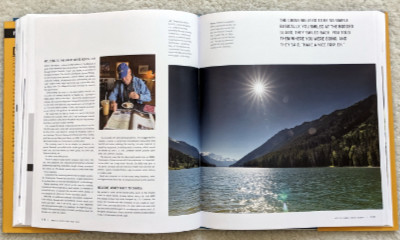 With the break out of the way, it was time to enter Canada and head for the beginning of the Alaska Highway in Dawson Creek, British Columbia. Cotter had a recent (but not quite current) edition of The Milepost with him. The Milepost is published annually and is close to indispensable for anyone traveling the Alaska Highway. That road is its primary focus and its initial reason for being but it now not only covers the Alaska Highway but just about every path for getting to and from it. That includes coming from Vancouver which is what Cotter and MAR were doing.
With the break out of the way, it was time to enter Canada and head for the beginning of the Alaska Highway in Dawson Creek, British Columbia. Cotter had a recent (but not quite current) edition of The Milepost with him. The Milepost is published annually and is close to indispensable for anyone traveling the Alaska Highway. That road is its primary focus and its initial reason for being but it now not only covers the Alaska Highway but just about every path for getting to and from it. That includes coming from Vancouver which is what Cotter and MAR were doing.
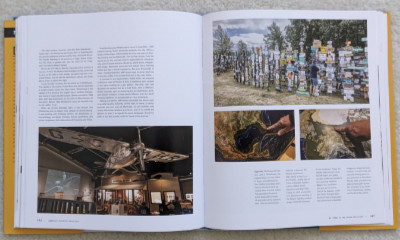 British Columbia and the Yukon Territory contain the bulk of the Alaska Highway with only the northernmost two hundred miles or so being in Alaska. Cotter reports that any pride associated with returning to the U.S. was short-lived and declares this “absolutely the worst roads” they had driven so far. The Alaska Highway officially ends at Delta Junction but Fairbanks is easily reached on what is sometimes seen as an extension, the Richardson Highway.
British Columbia and the Yukon Territory contain the bulk of the Alaska Highway with only the northernmost two hundred miles or so being in Alaska. Cotter reports that any pride associated with returning to the U.S. was short-lived and declares this “absolutely the worst roads” they had driven so far. The Alaska Highway officially ends at Delta Junction but Fairbanks is easily reached on what is sometimes seen as an extension, the Richardson Highway.
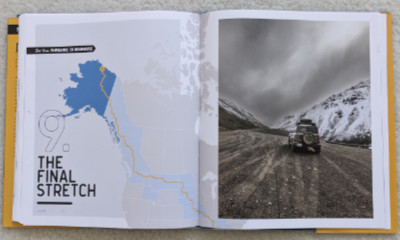 The Airstream was left with a cousin while Cotter and MAR tackled the final stretch to Deadhorse in the Bronco. Several aspects of this trip reminded me of my own 2016 drive to Alaska but perhaps none so much as the mention of “a mandatory pit stop at the Hilltop Restaurant north of Fairbanks”. Even though I did not drive north of Fairbanks on my own but used a commercial tour company to visit the Arctic Circle, we had breakfast at the Hilltop before hitting the Dalton Highway.
The Airstream was left with a cousin while Cotter and MAR tackled the final stretch to Deadhorse in the Bronco. Several aspects of this trip reminded me of my own 2016 drive to Alaska but perhaps none so much as the mention of “a mandatory pit stop at the Hilltop Restaurant north of Fairbanks”. Even though I did not drive north of Fairbanks on my own but used a commercial tour company to visit the Arctic Circle, we had breakfast at the Hilltop before hitting the Dalton Highway.
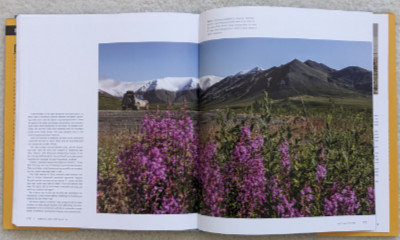 My visit to the Arctic Circle had been a one-day there-and-back affair. Cotter and Mar spent a night on the Dalton Highway in Wiseman and two nights at the end of the road in Deadhorse. Just reaching the end of the road would be enough for most people but Cotter went above and beyond by joining the Arctic Polar Bear Club with a dip in the 40°F Prudhoe Bay to bookend his dip in the “warmer than my morning shower” water at the start of the trip in Key West.
My visit to the Arctic Circle had been a one-day there-and-back affair. Cotter and Mar spent a night on the Dalton Highway in Wiseman and two nights at the end of the road in Deadhorse. Just reaching the end of the road would be enough for most people but Cotter went above and beyond by joining the Arctic Polar Bear Club with a dip in the 40°F Prudhoe Bay to bookend his dip in the “warmer than my morning shower” water at the start of the trip in Key West.
Looking back over what I’ve written, it seems I’ve been reviewing the trip rather than the book. Maybe there is at least a sense of it in the included thumbnail images. It has lots of MAR’s wonderful photos. The thumbnails offer hints of these although they don’t show that they are printed on heavyweight glossy paper which helps them look their best. Cotter’s words augment the photos (or vice versa) with details of the trip I have more or less summarized. Those words are at their best when telling about encounters with others. Some are people living along the route while others just happen to be traveling a piece of it at the same instant Cotter and MAR pass by. The ratio of the two sort of reverses itself as the trip progresses. Residents — some permanent and some temporary — outnumber people actually in motion during the early portions of the trip but the situation is pretty much the opposite once the Dalton Highway is reached.
Some percentage of interesting people exists among both residents and travelers just about everywhere. Cotter manages to find them on a regular basis but he suggests that the percentage may increase toward the end of the trip. “Boring people generally don’t travel to Alaska’s outback,” he observes. I guess that means his job got easier the farther they traveled.
America’s Greatest Road Trip!: Key West to Deadhorse: 9000 Miles Across Backroad USA, Tom Cotter and Michael Alan Ross, Motorbooks (September 19, 2023), 9.45 x 10.71 inches, 192 pages, ISBN 978-0760381069
Available through Amazon.
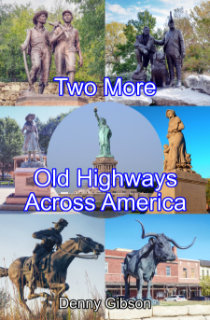 I had so much fun driving twice across the country for 20 in ’21 and the YT Too, that I did it again. This time, both coast-to-coast routes were from the era of named auto trails that preceded the U.S. Numbered Highway System. A drive on the National Old Trails Road was plotted years ago but never got scheduled. Only after I was given access to a guide for the Pikes Peak Ocean to Ocean Highway, an auto trail with similar endpoints, did I get serious about scheduling a trip on the NOTR that I matched with one on the PPOO. Driving both trails in one outing didn’t fit into my life in 2024, so they were split into two. Both trips and both routes do fit into this book, however, despite there being over 200 photos included. Apparently, that’s a personal record. In prepping to write this review, I reread my review for 20 in ’21 and the YT Too and saw it was bragging about “nearly 200” photos. “Over 200” is now the new high mark. This book doesn’t have more pages, though, so I have to resort to bragging about “nearly as many pages as 20 in ’21 and the YT Too”.
I had so much fun driving twice across the country for 20 in ’21 and the YT Too, that I did it again. This time, both coast-to-coast routes were from the era of named auto trails that preceded the U.S. Numbered Highway System. A drive on the National Old Trails Road was plotted years ago but never got scheduled. Only after I was given access to a guide for the Pikes Peak Ocean to Ocean Highway, an auto trail with similar endpoints, did I get serious about scheduling a trip on the NOTR that I matched with one on the PPOO. Driving both trails in one outing didn’t fit into my life in 2024, so they were split into two. Both trips and both routes do fit into this book, however, despite there being over 200 photos included. Apparently, that’s a personal record. In prepping to write this review, I reread my review for 20 in ’21 and the YT Too and saw it was bragging about “nearly 200” photos. “Over 200” is now the new high mark. This book doesn’t have more pages, though, so I have to resort to bragging about “nearly as many pages as 20 in ’21 and the YT Too”. 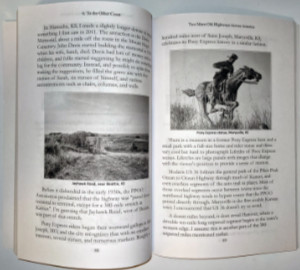 I also bragged about the title of the Yellowstone Trail and US 20 book and bemoaned the fact that it wasn’t as clever as initially envisioned. Of course, clever sometimes also means cryptic, and that might have been the case here. Anyone who thought 20 in ’21 and the YT Too overly cryptic will be happy to see that the title of this book isn’t cryptic at all and not the least bit clever either. It really is about going across America on two old highways and, since I’ve done that before, it really is about two MORE old highways. It just occurred to me that some folks might be unhappy about having to guess which two, and I can understand that. But putting the wordy names of these two auto trails in the title would have made it entirely too long, and it’s too late to do anything about it now anyway. Sorry.
I also bragged about the title of the Yellowstone Trail and US 20 book and bemoaned the fact that it wasn’t as clever as initially envisioned. Of course, clever sometimes also means cryptic, and that might have been the case here. Anyone who thought 20 in ’21 and the YT Too overly cryptic will be happy to see that the title of this book isn’t cryptic at all and not the least bit clever either. It really is about going across America on two old highways and, since I’ve done that before, it really is about two MORE old highways. It just occurred to me that some folks might be unhappy about having to guess which two, and I can understand that. But putting the wordy names of these two auto trails in the title would have made it entirely too long, and it’s too late to do anything about it now anyway. Sorry.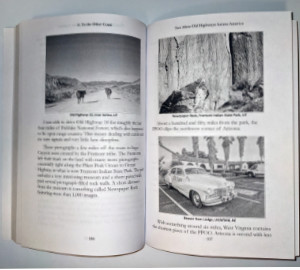 To be honest, though, even if the names National Old Trails Road and Pikes Peak Ocean to Ocean Highway were right there in the title, they would not be recognized by everyone. Out west, some would recognize the NOTR as something that turned into US 66. Back east, a similar number might recognize it and think it had become US 40. In the middle of the country, I suspect that just a few would even recognize the PPOO’s name. Of those who did, some might say it was replaced by US 36, while others would claim it became US 22. There is a little truth in each of these claims, but my point is that not all that many people know that the PPOO and NOTR were both once routes that connected the East Coast with the West. Their names in the title would not be any more enlightening to many than the words “Old Highways”.
To be honest, though, even if the names National Old Trails Road and Pikes Peak Ocean to Ocean Highway were right there in the title, they would not be recognized by everyone. Out west, some would recognize the NOTR as something that turned into US 66. Back east, a similar number might recognize it and think it had become US 40. In the middle of the country, I suspect that just a few would even recognize the PPOO’s name. Of those who did, some might say it was replaced by US 36, while others would claim it became US 22. There is a little truth in each of these claims, but my point is that not all that many people know that the PPOO and NOTR were both once routes that connected the East Coast with the West. Their names in the title would not be any more enlightening to many than the words “Old Highways”.
 My October Tinkertown visit began with a nice chat with owner Carla Ward. We had exchanged a few emails when I reviewed her 2020 book,
My October Tinkertown visit began with a nice chat with owner Carla Ward. We had exchanged a few emails when I reviewed her 2020 book,  Tanya was living in Los Angeles at the time but was present in New Mexico when the diagnosis was delivered, and even moved back to the museum that had been her childhood home for a while to help with things as the disease progressed. On the day of the diagnosis, she found herself remembering stories her dad told her as a child and wondering just how the plaques and tangles the doctor tried to describe would affect her father’s brain. She asks herself, “Will he survive this? If he doesn’t, who will tell the story?”
Tanya was living in Los Angeles at the time but was present in New Mexico when the diagnosis was delivered, and even moved back to the museum that had been her childhood home for a while to help with things as the disease progressed. On the day of the diagnosis, she found herself remembering stories her dad told her as a child and wondering just how the plaques and tangles the doctor tried to describe would affect her father’s brain. She asks herself, “Will he survive this? If he doesn’t, who will tell the story?” Tanya’s life wasn’t exactly typical. That her parents divorced and her dad remarried when she was quite young is hardly unusual, but that her mother and stepmother were both important influences as she grew up was a bit so. Even more unusual were occasional trips with her father as he traveled the country, painting rides and signs for carnivals and the like. The house she grew up in had walls made of concrete and empty bottles. It was filled, like a museum, with her dad’s artwork, and part of it was an actual museum open to the public.
Tanya’s life wasn’t exactly typical. That her parents divorced and her dad remarried when she was quite young is hardly unusual, but that her mother and stepmother were both important influences as she grew up was a bit so. Even more unusual were occasional trips with her father as he traveled the country, painting rides and signs for carnivals and the like. The house she grew up in had walls made of concrete and empty bottles. It was filled, like a museum, with her dad’s artwork, and part of it was an actual museum open to the public.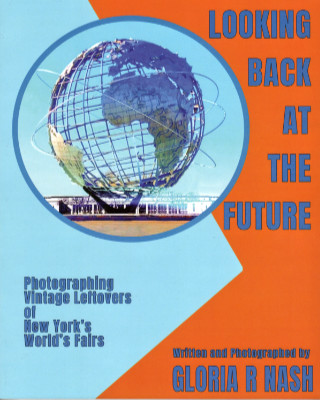 Before I even opened this book I was aware of Gloria Nash’s childhood fascination with the 1964 World’s Fair, the family circumstances that brought her back to the neighborhood, and her visits to the old fairgrounds that ultimately led to creating Looking Back at the Future. I was not aware of a high school photography class assignment to “locate and photograph remnants of the fair” that had recently closed. A few black-and-white pictures taken at that time are included in this volume where she wraps up that assignment in style.
Before I even opened this book I was aware of Gloria Nash’s childhood fascination with the 1964 World’s Fair, the family circumstances that brought her back to the neighborhood, and her visits to the old fairgrounds that ultimately led to creating Looking Back at the Future. I was not aware of a high school photography class assignment to “locate and photograph remnants of the fair” that had recently closed. A few black-and-white pictures taken at that time are included in this volume where she wraps up that assignment in style. The book’s subtitle, “Photographing Vintage Leftovers of New York’s World’s Fairs”, accurately describes its main thrust. Well-written text provides background on both fairs, and there are descriptions of buildings and other items that no longer exist, but photographs of what that subtitle calls “leftovers” fill the bulk of the book. Most were taken by the author although a few come from other sources. Some images from postcards and other promotional materials are also used sparingly. The book is printed on good quality fairly heavy stock but it is not coated gloss stock. All of the modern photos are bright and clear and look quite good but this is not a “coffee table” book.
The book’s subtitle, “Photographing Vintage Leftovers of New York’s World’s Fairs”, accurately describes its main thrust. Well-written text provides background on both fairs, and there are descriptions of buildings and other items that no longer exist, but photographs of what that subtitle calls “leftovers” fill the bulk of the book. Most were taken by the author although a few come from other sources. Some images from postcards and other promotional materials are also used sparingly. The book is printed on good quality fairly heavy stock but it is not coated gloss stock. All of the modern photos are bright and clear and look quite good but this is not a “coffee table” book.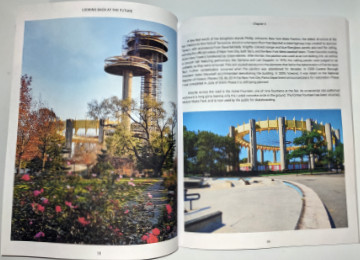 Nash has done a phenomenal job in tracking down fair remnants and makes sure that others can “locate and photograph” these leftovers, too. The location of all leftovers at the fair site (now Flushing Meadows Corona Park) is shown on a map with color coding to distinguish 1939 leftovers from 1964 leftovers. Both chapters on “On-Site Leftovers” contain what amounts to a tour guide for a walk that visits each of them. Chapters on “Off-Site Leftovers” describe locations and give addresses where appropriate. An appendix provides these locations in a list format.
Nash has done a phenomenal job in tracking down fair remnants and makes sure that others can “locate and photograph” these leftovers, too. The location of all leftovers at the fair site (now Flushing Meadows Corona Park) is shown on a map with color coding to distinguish 1939 leftovers from 1964 leftovers. Both chapters on “On-Site Leftovers” contain what amounts to a tour guide for a walk that visits each of them. Chapters on “Off-Site Leftovers” describe locations and give addresses where appropriate. An appendix provides these locations in a list format.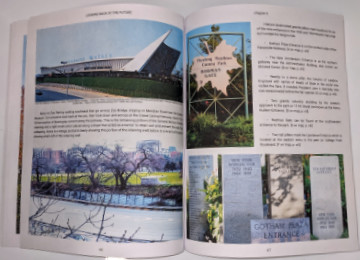 Although both of these fairs made lasting impressions on the people who attended them. neither was a success from the organizers’ point of view. Organizers in 1939 hoped for 50 million visitors but got only 45 million. The target in 1964 was 70 million, but only 51 million showed up. I wasn’t around in 1939, and even though I was very much around in 1964 and well aware of the fair, I did not attend. I have only attended one world’s fair in my life, and that was in 1983 in Knoxville, TN. Nash says that was the last profitable world’s fair held in this country. Coincidence?
Although both of these fairs made lasting impressions on the people who attended them. neither was a success from the organizers’ point of view. Organizers in 1939 hoped for 50 million visitors but got only 45 million. The target in 1964 was 70 million, but only 51 million showed up. I wasn’t around in 1939, and even though I was very much around in 1964 and well aware of the fair, I did not attend. I have only attended one world’s fair in my life, and that was in 1983 in Knoxville, TN. Nash says that was the last profitable world’s fair held in this country. Coincidence? I’ve been anticipating this book for a few years now. Henry was probably well into his research for the book when he gave a presentation at the 2017 Lincoln Highway Association conference on trekkers who had incorporated all or part of the highway in their travels. The Lincoln Highway and other trails aimed at automobiles appeared in the latter half of the golden age of trekking, which Trekking Across America focuses on. Henry identifies this as roughly 1890 to 1930. Merriam-Webster defines a trek as “an arduous journey” and during that period just about any long-distance journey that did not involve the railroad was unquestionably arduous. I ordered the book as soon as I became aware of its publication but my own non-arduous travels and the winter holidays kept me from reading and reviewing it until now.
I’ve been anticipating this book for a few years now. Henry was probably well into his research for the book when he gave a presentation at the 2017 Lincoln Highway Association conference on trekkers who had incorporated all or part of the highway in their travels. The Lincoln Highway and other trails aimed at automobiles appeared in the latter half of the golden age of trekking, which Trekking Across America focuses on. Henry identifies this as roughly 1890 to 1930. Merriam-Webster defines a trek as “an arduous journey” and during that period just about any long-distance journey that did not involve the railroad was unquestionably arduous. I ordered the book as soon as I became aware of its publication but my own non-arduous travels and the winter holidays kept me from reading and reviewing it until now.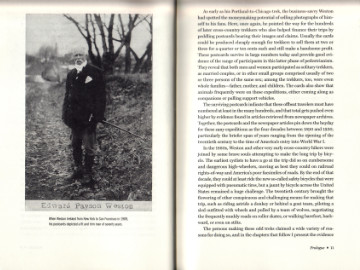 A fellow named Edward Weston is credited with getting the walking craze started by walking from Boston to Washington to satisfy a bet made on the wrong guy (Stephen Douglas) in the 1860 presidential election. Apparently, Weston decided that he really liked walking and was quite good at it. He proceeded to set records and win awards into his seventies. In some circles, the rampant pedestrianism of the time was referred to as Westonianism.
A fellow named Edward Weston is credited with getting the walking craze started by walking from Boston to Washington to satisfy a bet made on the wrong guy (Stephen Douglas) in the 1860 presidential election. Apparently, Weston decided that he really liked walking and was quite good at it. He proceeded to set records and win awards into his seventies. In some circles, the rampant pedestrianism of the time was referred to as Westonianism.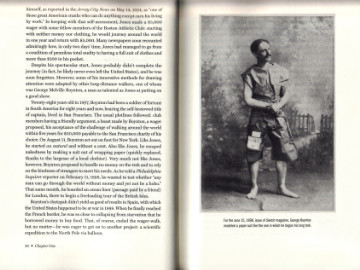 Postcards are also a rather natural way to provide a visual connection with a trek’s story. Henry divides these stories into five chapters based — not all that rigidly — on the reason for the trek. Following a chapter’s introduction are several segments featuring one or two specific treks with at least one related image. Postcards often provide those images. These two or three page standalone segments allow “Trekking Across America” to be read in small doses if desired.
Postcards are also a rather natural way to provide a visual connection with a trek’s story. Henry divides these stories into five chapters based — not all that rigidly — on the reason for the trek. Following a chapter’s introduction are several segments featuring one or two specific treks with at least one related image. Postcards often provide those images. These two or three page standalone segments allow “Trekking Across America” to be read in small doses if desired.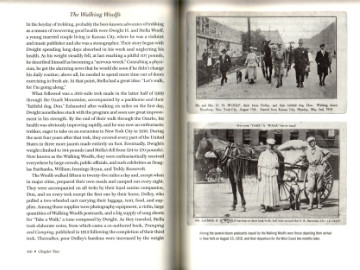 Individual males were hardly the only ones undertaking these long arduous journeys. Buddies, siblings, newlyweds, whole families, and even a few lone women appear on these pages. Incidentally, little evidence is presented here that a trekking honeymoon will lead to marital bliss. The rules for some of the contests and challenges were also interesting. Virtually every trek involved some sort of time limit but rules about clothing, starting with little or no money, and working en route were also common. After the turn of the century, gimmicks such as the aforementioned skating or rolling a hoop might be involved. One fellow fiddled every step of the way as he walked from New York to Los Angeles and on to San Francisco.
Individual males were hardly the only ones undertaking these long arduous journeys. Buddies, siblings, newlyweds, whole families, and even a few lone women appear on these pages. Incidentally, little evidence is presented here that a trekking honeymoon will lead to marital bliss. The rules for some of the contests and challenges were also interesting. Virtually every trek involved some sort of time limit but rules about clothing, starting with little or no money, and working en route were also common. After the turn of the century, gimmicks such as the aforementioned skating or rolling a hoop might be involved. One fellow fiddled every step of the way as he walked from New York to Los Angeles and on to San Francisco.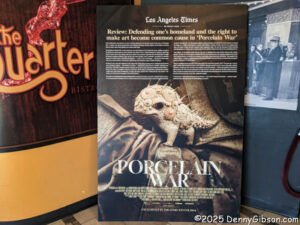
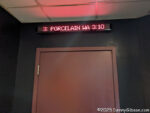
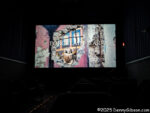
 It looks like tomorrow (Jan 9) is the last day
It looks like tomorrow (Jan 9) is the last day 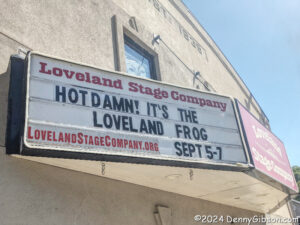





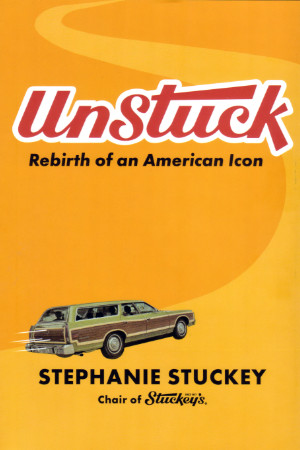 I am more familiar with Stuckey’s signs than their products. As a kid, I probably didn’t even know the company existed since my family did not travel much. They were still going strong when I started doing some traveling on my own and I believe I bought gas at their stores a few times along with a pecan log roll or two but there was very little money in my travel budget for candy and none at all for rubber snakes. By the time my own fortunes had improved to the point that snacks were regularly permitted on road trips, Stuckey’s fortunes were headed in the other direction. The main reason that I am familiar with Stuckey’s signs is that I drove by a bunch of them. Many, maybe most, were for stores that were closed.
I am more familiar with Stuckey’s signs than their products. As a kid, I probably didn’t even know the company existed since my family did not travel much. They were still going strong when I started doing some traveling on my own and I believe I bought gas at their stores a few times along with a pecan log roll or two but there was very little money in my travel budget for candy and none at all for rubber snakes. By the time my own fortunes had improved to the point that snacks were regularly permitted on road trips, Stuckey’s fortunes were headed in the other direction. The main reason that I am familiar with Stuckey’s signs is that I drove by a bunch of them. Many, maybe most, were for stores that were closed.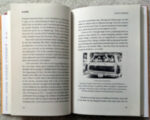
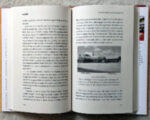
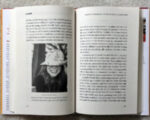
 Like pictures? It’s got ’em. Like variety? Got that too. There are enough pictures to fill a deck of cards or a weekly calendar, which is not accidental. The premise for the book was writing an article to accompany a photograph every week for a year. That could very well be a student assignment in an overly long writing course and in a sense it is. Jim Grey assigned himself the exercise to, as he says, “strengthen this muscle”. He is referring to the writing muscle which can surely benefit from practice just as much as a musician’s skill or an athlete’s strength.
Like pictures? It’s got ’em. Like variety? Got that too. There are enough pictures to fill a deck of cards or a weekly calendar, which is not accidental. The premise for the book was writing an article to accompany a photograph every week for a year. That could very well be a student assignment in an overly long writing course and in a sense it is. Jim Grey assigned himself the exercise to, as he says, “strengthen this muscle”. He is referring to the writing muscle which can surely benefit from practice just as much as a musician’s skill or an athlete’s strength.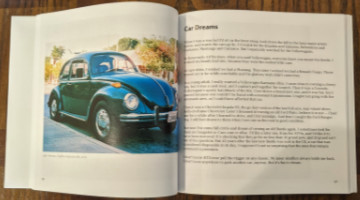 Even though photographs are at the heart of Under the Catalpa Tree, the book’s subtitle mentions only “stories and essays”. I’m guessing that is at least partially because only the stories and essays needed to be newly created for the book. The photos already existed from Grey’s many years of photographing the world around him. He doesn’t explain how the photos were selected. I am sure it was not completely random but there is tremendous variety. They range in quality from slightly fuzzy black-and-white snapshots taken years ago with a yardsale camera to crisp color images taken with high-end gear and well-developed skills. Some photos are digital but film is the source of many of the images since Grey collects — and heavily uses — film cameras. Among the subjects are family, friends, cars, houses, nature, and an abbey in Ireland.
Even though photographs are at the heart of Under the Catalpa Tree, the book’s subtitle mentions only “stories and essays”. I’m guessing that is at least partially because only the stories and essays needed to be newly created for the book. The photos already existed from Grey’s many years of photographing the world around him. He doesn’t explain how the photos were selected. I am sure it was not completely random but there is tremendous variety. They range in quality from slightly fuzzy black-and-white snapshots taken years ago with a yardsale camera to crisp color images taken with high-end gear and well-developed skills. Some photos are digital but film is the source of many of the images since Grey collects — and heavily uses — film cameras. Among the subjects are family, friends, cars, houses, nature, and an abbey in Ireland. A detail I appreciate is laying out the book so that all images are alone on a left-hand page. That happens naturally when the text occupies a single page, which is common, or three pages, which is not. There are quite a few two-page essays where a blank is used to get things back in synch. Totally worth it, in my opinion. Those pages, by the way, utilize Amazon’s premium paper which has the photos looking their best.
A detail I appreciate is laying out the book so that all images are alone on a left-hand page. That happens naturally when the text occupies a single page, which is common, or three pages, which is not. There are quite a few two-page essays where a blank is used to get things back in synch. Totally worth it, in my opinion. Those pages, by the way, utilize Amazon’s premium paper which has the photos looking their best. It’s a simple concept. Position yourself at the southernmost point in the continental United States then drive to the northernmost point in the U.S. accessible by road. The former is Key West, Florida. Deadhorse, Alaska, is the latter. The two are separated by a little over 4,000 miles as an extremely hardy all-weather crow might fly. Limited to traveling on the earth’s surface, Tom Cotter and Michael Alan Ross clocked 8,881 miles in making the connection. The difference is easily justified. Tom and Michael had more fun than any crow could even dream of.
It’s a simple concept. Position yourself at the southernmost point in the continental United States then drive to the northernmost point in the U.S. accessible by road. The former is Key West, Florida. Deadhorse, Alaska, is the latter. The two are separated by a little over 4,000 miles as an extremely hardy all-weather crow might fly. Limited to traveling on the earth’s surface, Tom Cotter and Michael Alan Ross clocked 8,881 miles in making the connection. The difference is easily justified. Tom and Michael had more fun than any crow could even dream of. That camper was a new Basecamp 16X on loan from Airstream. The tow vehicle was a 2021 Bronco Outer Banks on loan from Ford. As Cotter tells it, he got the Bronco by telling Ford that Airstream had promised him a camper and he got the camper by telling Airstream that Ford had promised a Bronco.
That camper was a new Basecamp 16X on loan from Airstream. The tow vehicle was a 2021 Bronco Outer Banks on loan from Ford. As Cotter tells it, he got the Bronco by telling Ford that Airstream had promised him a camper and he got the camper by telling Airstream that Ford had promised a Bronco. They clipped a corner of Georgia, then crossed Alabama (with a stop in Muscle Shoals) before turning north in Louisiana to reach Tennessee. They entered Missouri via the bootheel and maintained a west-by-northwest course through that state and Kansas with appropriate adjustments to take in the big ball of twine in Cawker City. Then it was a little more directly north through Nebraska and the Dakotas with a Memorial Day pause at the Black Hills National Cemetery in South Dakota. There was a different sort of pause at the North Dakota line. Despite all of Cotter’s past travels, he had, at this point, visited just forty-nine states. North Dakota was number fifty.
They clipped a corner of Georgia, then crossed Alabama (with a stop in Muscle Shoals) before turning north in Louisiana to reach Tennessee. They entered Missouri via the bootheel and maintained a west-by-northwest course through that state and Kansas with appropriate adjustments to take in the big ball of twine in Cawker City. Then it was a little more directly north through Nebraska and the Dakotas with a Memorial Day pause at the Black Hills National Cemetery in South Dakota. There was a different sort of pause at the North Dakota line. Despite all of Cotter’s past travels, he had, at this point, visited just forty-nine states. North Dakota was number fifty. North of Bismarck, Cotter and MAR picked up US 2 and headed west. That might not be the most direct route to Alaska but there were friends near Seattle and, as any good road-tripper knows, anything can be “on the way” if you look at it just right. Hitting Glacier National Park and the Going-to-the-Sun Road might have also been a factor in route selection but the scenic road was not yet open for the summer when they arrived. There was, of course, plenty of great scenery even without Going-to-the-Sun, and plenty of interesting people, too.
North of Bismarck, Cotter and MAR picked up US 2 and headed west. That might not be the most direct route to Alaska but there were friends near Seattle and, as any good road-tripper knows, anything can be “on the way” if you look at it just right. Hitting Glacier National Park and the Going-to-the-Sun Road might have also been a factor in route selection but the scenic road was not yet open for the summer when they arrived. There was, of course, plenty of great scenery even without Going-to-the-Sun, and plenty of interesting people, too.  With the break out of the way, it was time to enter Canada and head for the beginning of the Alaska Highway in Dawson Creek, British Columbia. Cotter had a recent (but not quite current) edition of The Milepost with him. The Milepost is published annually and is close to indispensable for anyone traveling the Alaska Highway. That road is its primary focus and its initial reason for being but it now not only covers the Alaska Highway but just about every path for getting to and from it. That includes coming from Vancouver which is what Cotter and MAR were doing.
With the break out of the way, it was time to enter Canada and head for the beginning of the Alaska Highway in Dawson Creek, British Columbia. Cotter had a recent (but not quite current) edition of The Milepost with him. The Milepost is published annually and is close to indispensable for anyone traveling the Alaska Highway. That road is its primary focus and its initial reason for being but it now not only covers the Alaska Highway but just about every path for getting to and from it. That includes coming from Vancouver which is what Cotter and MAR were doing. British Columbia and the Yukon Territory contain the bulk of the Alaska Highway with only the northernmost two hundred miles or so being in Alaska. Cotter reports that any pride associated with returning to the U.S. was short-lived and declares this “absolutely the worst roads” they had driven so far. The Alaska Highway officially ends at Delta Junction but Fairbanks is easily reached on what is sometimes seen as an extension, the Richardson Highway.
British Columbia and the Yukon Territory contain the bulk of the Alaska Highway with only the northernmost two hundred miles or so being in Alaska. Cotter reports that any pride associated with returning to the U.S. was short-lived and declares this “absolutely the worst roads” they had driven so far. The Alaska Highway officially ends at Delta Junction but Fairbanks is easily reached on what is sometimes seen as an extension, the Richardson Highway. The Airstream was left with a cousin while Cotter and MAR tackled the final stretch to Deadhorse in the Bronco. Several aspects of this trip reminded me of my own 2016 drive to Alaska but perhaps none so much as the mention of “a mandatory pit stop at the Hilltop Restaurant north of Fairbanks”. Even though I did not drive north of Fairbanks on my own but used a commercial tour company to visit the Arctic Circle, we had breakfast at the Hilltop before hitting the Dalton Highway.
The Airstream was left with a cousin while Cotter and MAR tackled the final stretch to Deadhorse in the Bronco. Several aspects of this trip reminded me of my own 2016 drive to Alaska but perhaps none so much as the mention of “a mandatory pit stop at the Hilltop Restaurant north of Fairbanks”. Even though I did not drive north of Fairbanks on my own but used a commercial tour company to visit the Arctic Circle, we had breakfast at the Hilltop before hitting the Dalton Highway. My visit to the Arctic Circle had been a one-day there-and-back affair. Cotter and Mar spent a night on the Dalton Highway in Wiseman and two nights at the end of the road in Deadhorse. Just reaching the end of the road would be enough for most people but Cotter went above and beyond by joining the Arctic Polar Bear Club with a dip in the 40°F Prudhoe Bay to bookend his dip in the “warmer than my morning shower” water at the start of the trip in Key West.
My visit to the Arctic Circle had been a one-day there-and-back affair. Cotter and Mar spent a night on the Dalton Highway in Wiseman and two nights at the end of the road in Deadhorse. Just reaching the end of the road would be enough for most people but Cotter went above and beyond by joining the Arctic Polar Bear Club with a dip in the 40°F Prudhoe Bay to bookend his dip in the “warmer than my morning shower” water at the start of the trip in Key West.